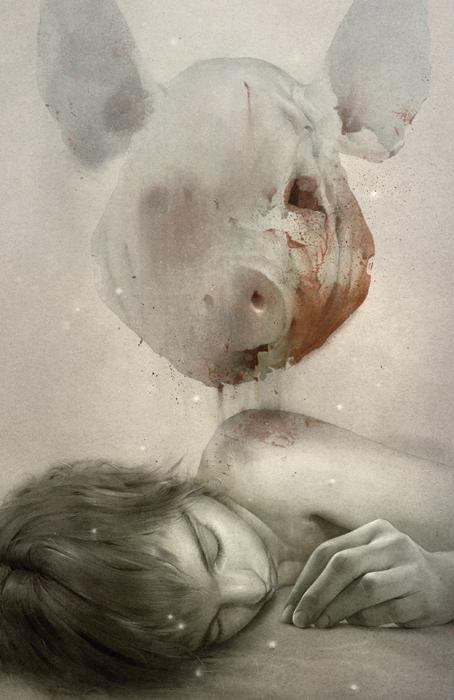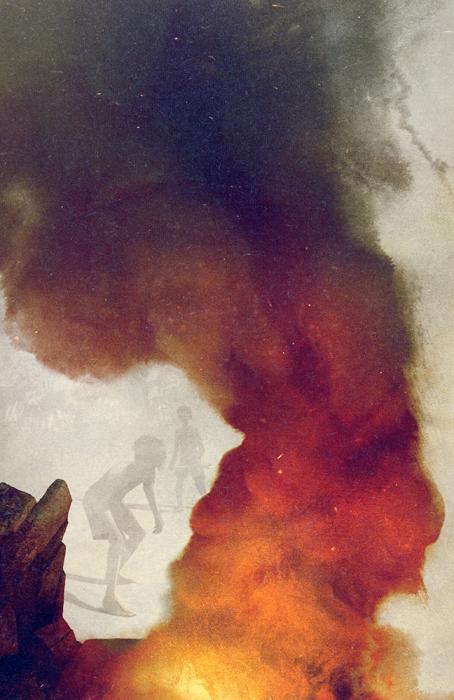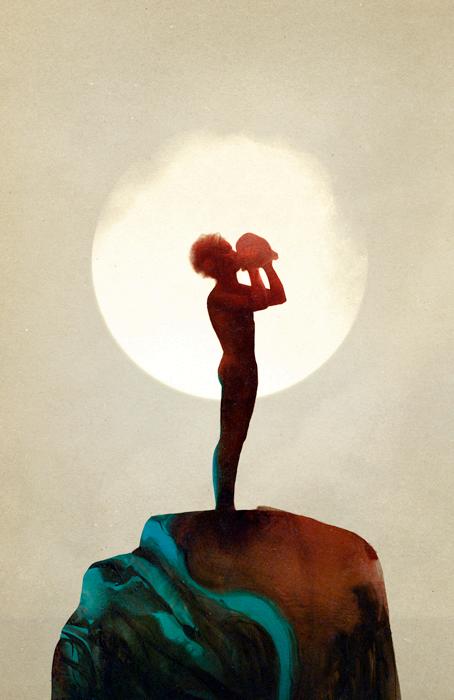
6 minute read
Lord of the Flies: Analysis Essay
Lord of the
Flies Literary Analysis Essay Kyoung Hwa Kim–Grade 10 I
Advertisement
In Lord of the Flies, William Golding writes about
British school boys who are stranded on an island without any adult supervision.
Throughout the novel, Golding reveals the clash between savagery and civilization and shows how the boys gradually slip into savagery.
Golding shows how each character is affected by savagery on different levels, with most of the boys slipping into savagery and some struggling to remain civilized. Golding uses several literary devices to show this. One device in particular that helps illustrate this is characterization.
Golding uses characterization of Piggy, Ralph and Jack's physical appearance, speech and thought, and actions to illustrate how each either remains civilized or struggles to remain civilized or slips into savagery. One of the main characters Golding shows apparent uses of characterization is Piggy. Golding uses characterization to show how Piggy not only remains civilized, but also how he is even willing to fight against savagery. Piggy’s civilized aspect is shown through Golding's characterization of Piggy's appearance, his disdaining speech towards savage-like behaviors, and his act of reminding about the smoke and his willingness to fight against savagery. Golding first shows how Piggy remains civilized through his unchanging when his hair doesn’t grow like other boys: “He was the only boy on the island whose hair never seemed to grow” (54). The hair growing and change of appearance show how other boys are physically becoming savages. By characterizing the appearance through his hair not growing, Golding illustrates Piggy’s unchanging civility. In addition to his appearance, Golding shows Piggy's civilized aspect through his speech. When other boys start to slip into savagery and
Hact without thinking, Piggy expresses his disdain: “‘Like kids!’ he said scornfully. ‘Acting like a crowd of kids!’” (30) This not only shows Piggy as a civilized character who disdains the act of savagery, but also shows that he is unaffected by savagery while others start to act like savages. Unlike other savage-like boys, Piggy’s unaffected civility is clearly shown through his act of reminding the others of the purpose of the smoke. This civilized action is shown particularly towards the end of the story when Ralph starts to forget the purpose of the smoke. When Ralph couldn’t say anything more about the smoke, Piggy adds, “‘Course we have. ’Cos the smoke’s a signal and we can’t be rescued if we don’t have smoke’” (156). Through this Golding shows that Piggy
Pphysical appearance. This is most apparent remains civilized, as he hasn’t forgotten the 32
purpose of the smoke and their desire to go back to civilization. Furthermore, Golding not only shows Piggy’s unaffected civility, but also his willingness to fight against savagery. When savage boys take Piggy’s glasses, Piggy decides to stand up for himself and against Jack and his tribe. Then Ralph warns him saying, “You’ll get hurt,” (154) however, Piggy doesn't change his mind and shows his determination saying, “What can he do more than he has? I’ll tell him what’s what” (154). Through this Golding has clearly shown that Piggy is unyielding to savagery and even willing to fight against it.

Another character that Golding shows clear use of characterization is Ralph. Golding characterizes Ralph’s actions and thoughts to show how Ralph struggles to remain civilized throughout the story. Golding first characterizes and presents Ralph as a civilized leader and later shows his struggles through his changes in thought and action. The civilized aspect of Ralph is well-shown through Ralph’s action of stressing the importance of the rules and fire. The rules are one of the most important parts of civilized society and Ralph stresses the importance of fire in a civil manner, by calling an assembly. Golding also characterizes Ralph as someone who knows the importance of the fire, which creates smoke and is used as their signal for rescue. The importance of the fire is often stressed by Ralph and it reveals Ralph’s desire to return to civilization. After the hunters let the fire out Ralph says, “The fire is the most important thing on the island. How can we ever be rescued except by luck, if we don’t keep a fire going?” (69). Through this, Golding shows how Ralph stresses the importance and how much he cares about the fire. Later in the story, Golding starts to show how Ralph struggles against savagery through Ralph’s changes in thoughts and actions towards hunting, mock-hunting and the smoke. In the beginning, Golding shows how Ralph is frustrated by hunters only caring about hunting. However, Ralph’s thoughts towards hunting change as he later “… sunned himself in their new respect and felt that hunting was good after all” (162). Here Golding shows that Ralph thinks more positively about hunting and thinks it's “good after all.” Similar to how Ralph's thought on hunting changes, Ralph's action towards mock-hunting also changes. When the hunters start to mock-hunt after their first hunt, “Ralph watched them, envious and resentful.” However later on, Ralph joins the mock-hunting without even noticing. In this moment, Ralph’s desire to hunt becomes “over mastering” (101). Golding contrasts this moment when Ralph slips into savagery with
The Writers’ Ink Issue 4 the moment in the beginning when he used to just watch the mock hunt ‘resentfully.’ Furthermore, as Ralph struggles against savagery, he starts to lose the train of his thoughts and later has difficulties explaining the purpose of making smoke. This is evident in his violent reaction to Piggy as Piggy explains the purpose of the smoke when Ralph struggles to do so. Through Ralph’s violent reaction Golding implies that Ralph has forgotten the purpose and importance of the smoke: “‘I knew that!’ shouted Ralph. He pulled his arm away from Piggy. ‘Are you suggesting [that I forgot]?’” (156).
As Golding shows Ralph’s struggle to remain civilized, Golding also shows how Jack quickly gives into savagery. Golding shows this by characterizing Jack’s act of wearing war paint and hunting. In the beginning, Jack wears warpaint only to succeed at hunting; however, later when Jack has formed his own tribe, he starts to wear war paint all the time like a savage. Moreover, Jack wears war-paint every time he does anything savage like hunting or stealing Piggy’s glasses. This is because the war-paint helps Jack to be “liberated from shame and selfconsciousness” (52). Here Golding shows that war-paint has freed Jack from shame and selfconsciousness of civilization over savagery. As the painting frees Jack from restraints that were hindering the progression of savagery, he further slips into savagery. Another aspect that shows Jack’s progression towards savagery is hunting. At first, Golding shows how Jack hesitates to throw his spear and to kill the pig. However, as he slips into savagery, hunting becomes his top priority.This is apparent when he even lets the signal fire out and makes his own tribe for hunting. At last, Golding shows how Jack fully gives into savagery through Jack hunting Ralph without any clear reason. Prior to the hunt, Jack tells his tribe that “we’ve got to be careful and throw our spears like at a pig” (170). Through this Golding reveals that, for Jack, hunting Ralph is not different from hunting a pig. Hunting a man like a pig is an unacceptable action for any civilized man,
Jshowing how Jack gave up acting like a civilized man, but and began acting like a savage. William Golding successful employs characterization to illustrate the struggles of Piggy, Ralph and Jack to remain civilized. Golding especially characterizes each character’s appearance, speech, thought and actions to show how Piggy remains civilized whereas Ralph and Jack struggle and slip into savagery. Through characterization, Golding shows that savagery is part of human nature and how even innocent, young boys can change into cruel savages. This also implies that savagery can arise from anyone’s inner heart and ruin long-lasting civility. As long as savagery is part of human nature, the clash between savagery and civilization is unavoidable and people have to fight against their inner savagery for civilization.











